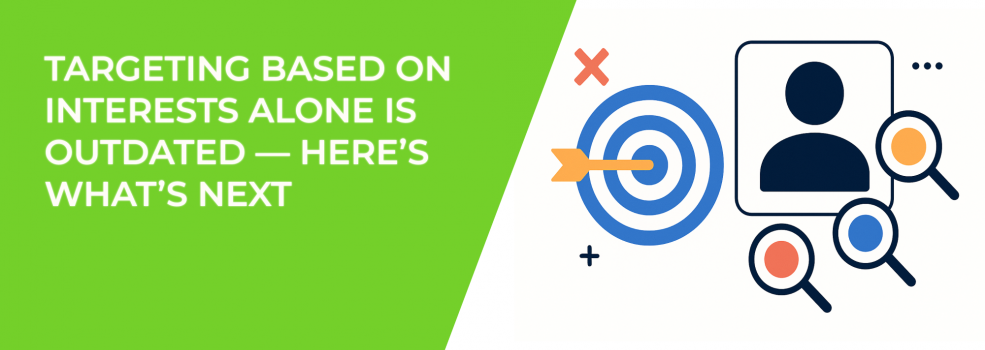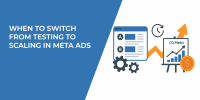For years, advertisers leaned heavily on interest-based targeting in Facebook Ads. If someone liked “fitness,” you showed them gym promotions. If they followed a cooking page, you pushed meal kit offers. It was simple, scalable, and — for a time — effective. But the digital landscape has shifted. Privacy updates, platform changes, and evolving user behavior mean that relying only on interests doesn’t deliver results anymore.
So, what’s next for advertisers who want to reach the right people without wasting budget? Let’s explore.
Why Interest-Based Targeting Lost Its Power
Interest targeting isn’t disappearing completely, but it’s no longer the golden key it once was. Platforms now limit visibility into detailed behavioral signals, which makes audiences less precise than before.
Think about it: someone might follow a yoga page for the aesthetics, not because they purchase yoga gear. Another person could have dozens of overlapping interests, but only one or two actually influence their buying behavior. Relying on that single marker is like predicting the weather by looking at one cloud — you’ll be wrong more often than right.
The result? Broader audiences, wasted impressions, and higher customer acquisition costs. Advertisers who keep depending on interests alone are paying for clicks that rarely convert.
For more on how targeting has shifted in recent years, check out our deep dive on Facebook Ads Targeting Updates: How To Adapt in 2025.
What’s Taking Its Place
Smart marketers are moving beyond interests and building multi-layered targeting strategies. Instead of choosing a handful of interests and hoping they work, they combine multiple signals that reflect real-world behaviors.
Some of the most effective alternatives include:
-
First-party data — like customer lists, email subscribers, and past buyers.
-
Lookalike audiences — modeled on actual customers instead of abstract interests.
-
Engagement-based segments — users who interacted with your ads, social posts, or website.
-
Contextual and placement targeting — showing ads based on the content people are consuming in real time.
Each of these signals is stronger than interests alone. And when you blend them, you get audiences that are sharper, more relevant, and more cost-efficient. That’s what advertisers need in 2025.
If you’re experimenting with layering signals, you’ll find this article on How to Layer Detailed Targeting for Hyper-Specific Facebook Audiences especially useful.
How to Rethink Your Targeting Strategy
Advertisers who want better results won’t just pick one interest and hope for conversions. They’ll build smarter targeting stacks. Here are some practical steps:
-
Audit your data sources
Collect and organize the first-party data you already have. Even a simple newsletter signup or webinar list can power custom audiences that outperform interests. -
Test broader audiences with strong creative
Instead of over-narrowing your targeting, allow Facebook’s algorithm some room. A compelling creative message can act as the filter that attracts the right buyers. -
Leverage retargeting wisely
Not every visitor is ready to purchase right away. Segment them by intent and follow up with the right message at the right stage of the journey. -
Layer, but don’t overcomplicate
Combine signals like engagement or purchase intent, but avoid shrinking your audience so much that you cut off potential reach.
Taking these steps ensures you’re targeting people who are more likely to act — not just scrolling past.
Expanding Targeting with LeadEnforce
One powerful but often overlooked method is targeting based on community following. This is where LeadEnforce becomes a game-changer. Instead of relying on vague interest categories, you can build audiences from the real groups and pages people follow.
LeadEnforce lets advertisers reach:
-
Followers of specific Facebook groups.
-
Fans of selected Facebook pages.
-
People who follow Instagram accounts in your niche.
Imagine the precision this offers. If you sell SaaS tools for startups, you could reach members of entrepreneur-focused groups. A fitness brand could advertise directly to people following health-driven Instagram communities. These audiences aren’t based on assumptions — they’re built on actual digital behavior. That makes them far more reliable and cost-effective.
For a step-by-step guide, see our article on how to build your target audience from a Facebook group. It shows exactly how to turn engaged communities into high-performing ad audiences.
Adding this type of targeting to your strategy means you’re speaking to people who already demonstrated interest by joining a community. That’s a huge upgrade from hoping a broad interest category matches your ideal customer.
The Role of AI and Automation
Another big shift is the rise of AI-driven targeting. Meta’s Advantage+ audience and similar tools use machine learning to spot patterns humans miss. For many advertisers, this feels like “giving up control.” But in practice, automation often discovers micro-segments you’d never think to target manually.
The key is balance. Use automation to scale and uncover hidden opportunities, but still measure performance against your goals. AI can extend reach — you decide what success looks like.
What Advertisers Should Ask Themselves
Before launching your next campaign, ask:
-
Am I relying too much on outdated interest targeting?
-
Do I have clean data that can power lookalike or retargeting audiences?
-
Is my ad creative strong enough to attract the right people in a broader pool?
-
Have I tested automation tools, or am I avoiding them out of habit?
These questions force you to think critically instead of defaulting to old methods. They also ensure you’re prepared for where digital ads are actually heading.
Moving Beyond Interests
Interest-based targeting had its moment, but today’s best results come from layered data, real community signals, and smarter automation. Tools like LeadEnforce help you cut through the noise by targeting followers of Facebook groups, pages, and Instagram accounts, giving you direct access to people who already care about your niche.
The platforms may not make advertising easier, but with the right strategy, marketers can still reach the right people at the right time — and do it with far less wasted spend.

